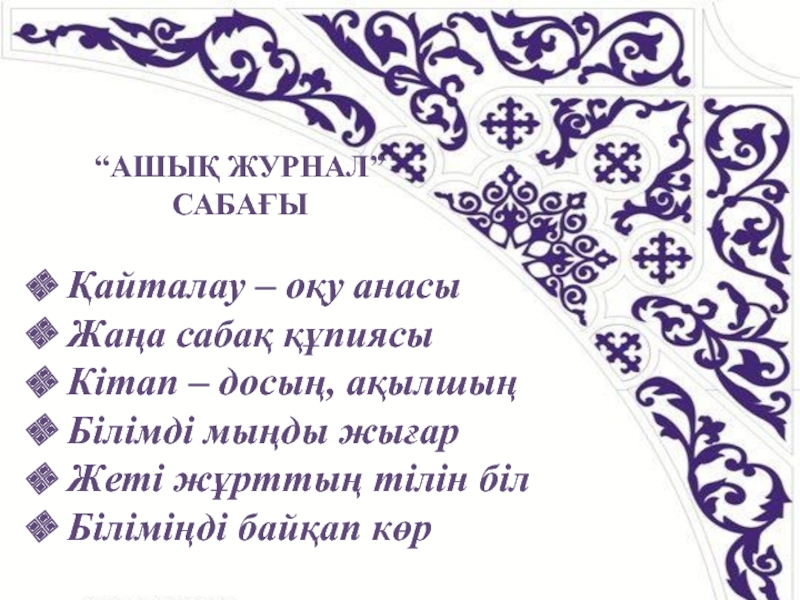- Главная
- Разное
- Образование
- Спорт
- Естествознание
- Природоведение
- Религиоведение
- Французский язык
- Черчение
- Английский язык
- Астрономия
- Алгебра
- Биология
- География
- Геометрия
- Детские презентации
- Информатика
- История
- Литература
- Математика
- Музыка
- МХК
- Немецкий язык
- ОБЖ
- Обществознание
- Окружающий мир
- Педагогика
- Русский язык
- Технология
- Физика
- Философия
- Химия
- Шаблоны, фоны, картинки для презентаций
- Экология
- Экономика
Презентация, доклад по английскому языку История Великобритании ч2
Содержание
- 1. Презентация по английскому языку История Великобритании ч2
- 2. Roman Period
- 3. Conquests in the 1st century, focused on
- 4. A Roman soldier wore body armour and
- 5. A Roman cavalry helmet.(found at Ribchester (Lancashire)A
- 6. Roman army bootsRoman army boots were like
- 7. Roman Legionary Statuette This small statue shows
- 8. Portchester fort built by the Romans to
- 9. Bits of Roman road between Manchester and
- 10. Lunt Fort (Coventry) is a modern reconstruction
- 11. The soldiers' bath-house at Chesters. This was
- 12. S P Q R Legio II Augusta
- 13. Map of Ancient Roman City of LondiniumMany
- 14. Romans Under Governor Suetonius Paulinus Massacre Druids
- 15. Roman gold coin with Emperor Claudius profile
- 16. The army of Suetonius Paulinus the imperial
- 17. Iceni tribe coinsIceni tribe territoryThe trouble started
- 18. Boudiccea, Queen of the Iceni, wife of Prasutagusand half to his wife, Queen Boudicca (Boudicea).
- 19. The Romans wanted it all. They also
- 20. Boadicea, rallying the troopsBoudicea rallied the troops
- 21. She led a surprisingly successful British revolt
- 22. The skulls found in a small London
- 23. Boudicca statue (fragment)A Roman historian Tacitus wrote.
- 24. Boudicca statue (fragment)The sculptor Thomas Thornycroft made
- 25. Statue of Boudicca at the northern end
- 26. Nevertheless, the rebellion was surpressed by a
- 27. Scotland at that time was not part
- 28. Roman Emperor Hadrian’s Bust (found in the
- 29. A Roman Coin of the Emperor Hadrian’s
- 30. William Bell Scott, The Romans Cause a
- 31. Hadrian's Wall was an immense structure, crossing
- 32. The famous Hadrian's Wall built by the
- 33. Hadrian's Wall viewed from Vercovicium (Housesteads)In some
- 34. This modern painting shows Roman soldiers at
- 35. Remains of a “Mile castle” on Hadrian's
- 36. The wall was the most heavily fortified
- 37. Mile castles on Hadrian's Wall had gateways,
- 38. Isn’t it amazing that up till now
- 39. The Roman baths at Bath England is
- 40. The Roman baths used water from natural
- 41. A fragment of a mosaic floor at
- 42. Gladiators fighting. A wall decoration Wall mosaic
- 43. The amphitheatre at Caerleon (Roman Isca) in
- 44. Ancient Romans Gladiators’ Arena in Chester (unearthed)Another
- 45. Remains of the theatre at St AlbansAt
- 46. A statue of Emperor Trajan, in front
- 47. Remnants of the Romans - The London WallThat’s how the past meets the future.
Слайд 3Conquests in the 1st century, focused on commercially valuable regions of
The Ancient Romans invasion started in AD 43. It was led by Aulus Plautius. It is not known how many Roman legions were sent; but one legion was commanded by the future emperor Vespasian.
Слайд 4A Roman soldier wore body armour and a metal helmet on
Слайд 5A Roman cavalry helmet.
(found at Ribchester (Lancashire)
A sword belonging to a
A fancy helmet like this was probably worn for parades or sports events. Roman swords were short. This sword probably belonged to a Roman army officer.
Слайд 6Roman army boots
Roman army boots were like sandals, but stronger with
Слайд 7Roman Legionary Statuette
This small statue shows a Roman soldier of
Слайд 8Portchester fort built by the Romans to guard the coast of
Portchester was one of the forts the Romans built to guard the coast of Britain. This is what it probably looked like in Roman times.
Слайд 9Bits of Roman road between Manchester and Yorkshire
Ancient Romans were good
Слайд 10Lunt Fort (Coventry) is a modern reconstruction of a Roman fort.
After the Romans invaded southern Britain, they had to defend it. They built roads, so that soldiers could march quickly to deal with trouble. They also built three very large army forts, and lots of smaller camps, for soldiers to live in.
Слайд 11The soldiers' bath-house at Chesters. This was a Roman cavalry fort
At first these forts were built of wood, later they were built of stone.
Слайд 13Map of Ancient Roman City of Londinium
Many of Britain's major cities,
Слайд 14Romans Under Governor Suetonius Paulinus Massacre Druids in Anglesey
The druids, the
Слайд 15Roman gold coin with Emperor Claudius profile minted to commemorate the
This Roman gold coin shows Emperor Claudius, with war trophies. The Latin letters stand for 'Triumph over the Britons'.
Слайд 16The army of Suetonius Paulinus the imperial governor returning from campaigning
But under Roman rule the Britons continued to worship their Celtic Gods. So they rebelled and then the Romans faced serious problems. Rebellion began when the Roman governor Paulinus led the Roman army to get rid of the Druids.
Слайд 17Iceni tribe coins
Iceni tribe territory
The trouble started in East Anglia. Prasutagus
Слайд 18Boudiccea, Queen of the Iceni, wife of Prasutagus
and half to his
Слайд 19The Romans wanted it all. They also wanted extra taxes and
Слайд 20
Boadicea, rallying the troops
Boudicea rallied the troops in AD60-61 and inspired
Слайд 21She led a surprisingly successful British revolt against Roman rule. The
Слайд 22The skulls found in a small London river
and forced the
Слайд 23Boudicca statue (fragment)
A Roman historian Tacitus wrote. "They could not wait
Слайд 24Boudicca statue (fragment)
The sculptor Thomas Thornycroft made a statue of Boadicea,
Слайд 25Statue of Boudicca at the northern end of Westminster Bridge, opposite
The queen is represented in her chariot with her two daughters. This statue of Boudicca stands beside the River Thames in London. It was made in 1897.
Слайд 26Nevertheless, the rebellion was surpressed by a more numerous army of
Слайд 27Scotland at that time was not part of Roman Britain, although
Слайд 28Roman Emperor Hadrian’s Bust (found in the Thames)
When Emperor Hadrian reached
Слайд 29A Roman Coin of the Emperor Hadrian’s Times
he ordered to build
Слайд 30William Bell Scott, The Romans Cause a Wall to be Built
The painting shows a centurion supervising the building of Hadrian's Wall. The centurions forced Britons from the occupied territories to work at the construction sites with no mercy.
Слайд 31Hadrian's Wall was an immense structure, crossing the island from shore
Слайд 32The famous Hadrian's Wall built by the order of Roman Emperor
its width and height dependent on the construction materials available nearby.
Слайд 33Hadrian's Wall viewed from Vercovicium (Housesteads)
In some places it measured 3
Слайд 34This modern painting shows Roman soldiers at Birdoswald Fort (Hadrian's Wall).
This does not include the wall's ditches, and forts, where numerous garrisons of Roman soldiers were encamped to watch the borders day and night.
Слайд 35Remains of a “Mile castle” on Hadrian's Wall
The Romans built
Слайд 36The wall was the most heavily fortified border in the Empire.
Слайд 37Mile castles on Hadrian's Wall had gateways, where soldiers could check
In addition to its role as a military fortification, it is thought that many of the gates through the wall would have served as customs posts to allow trade and levy taxation.
Слайд 38Isn’t it amazing that up till now almost 20 centuries later,
Слайд 39The Roman baths at Bath
England is rich in places where
Слайд 40
The Roman baths used water from natural springs through the aqueducts
Слайд 41A fragment of a mosaic floor at Lullingstone Roman Villa in
Fragments of wonderful mosaic floors can be seen at Ancient Romans’ villas. It’s at Lullingstone Roman Villa in Kent
Слайд 42Gladiators fighting. A wall decoration
Wall mosaic decorations have also been
Слайд 43The amphitheatre at Caerleon (Roman Isca) in south Wales
Some things
Слайд 44Ancient Romans Gladiators’ Arena in Chester (unearthed)
Another much smaller arena was
Слайд 45Remains of the theatre at St Albans
At St Albans (Roman Verulamium)
Слайд 46A statue of Emperor Trajan, in front of the remains of
In today’s London a part of the Ancient Roman wall is still preserved.




















































